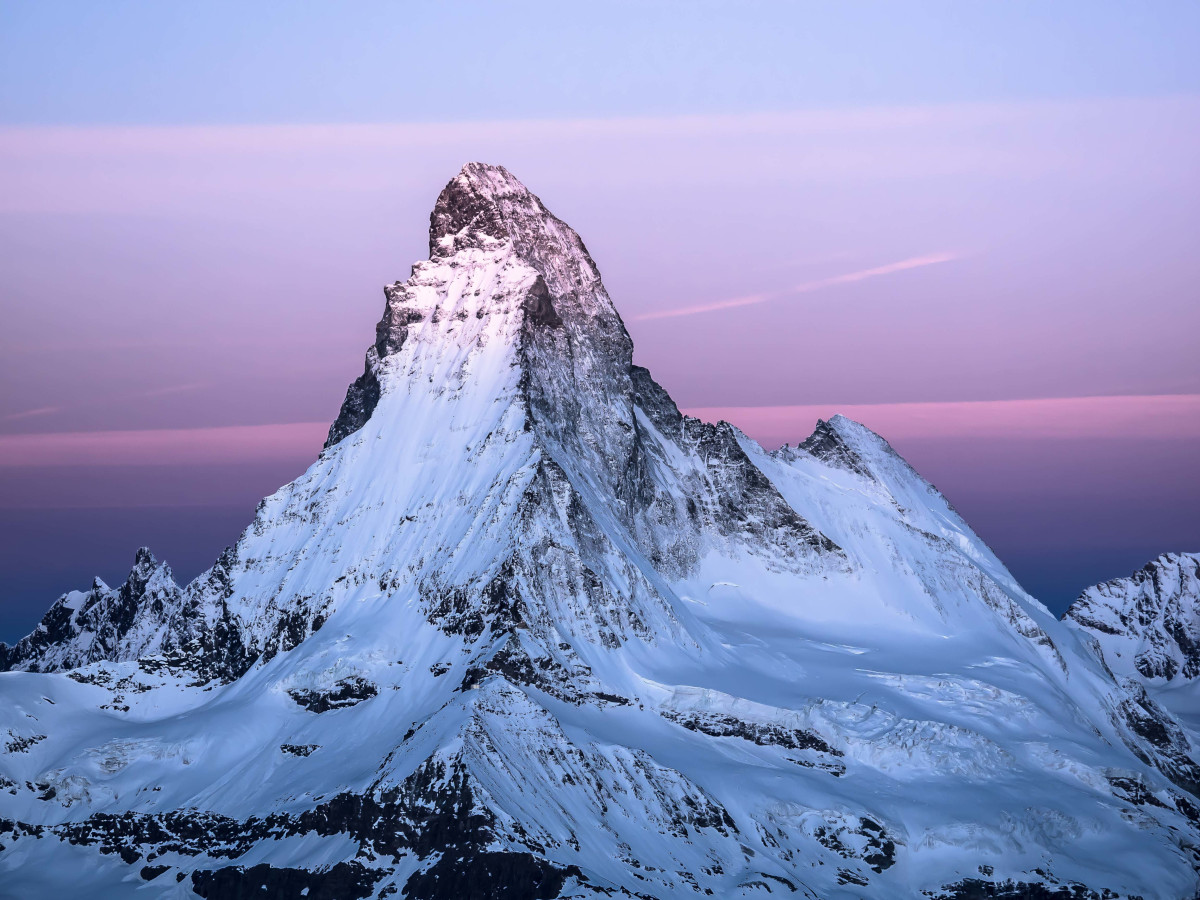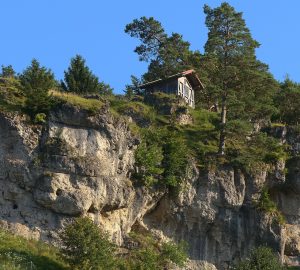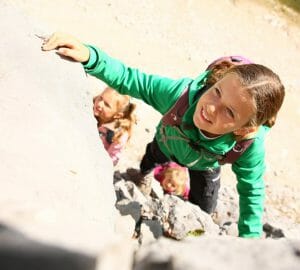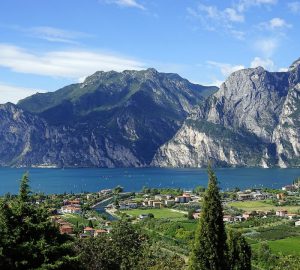Together with the famous Swiss alpine guide Samuel Anthamatten our contributor Michi Bösinger climbed one of the most beautiful mountains in the world – the 4478 meter-high Matterhorn near Zermatt. In doing so he testet an alpine backpack prototype by Tatonka.
@ 4450 meters
I am quickly climbing up, without crampons on slippery ground. My legs are tired. I have to carefully place every step. An inner voice tells me to concentrate – I have almost reached my goal. Just the last few meters left until I am standing on the exposed ridge – and I can already see him: Saint Bernard, patron of all the Matterhorn mountaineers. The bronze statue is sitting in the snow, underneath the Swiss peak and silently looking down on the alpinists. Everyone who passes it, has made it. A few minutes later I am standing on the 4478 meter-high Matterhorn – for many it is the most beautiful mountain in the world.
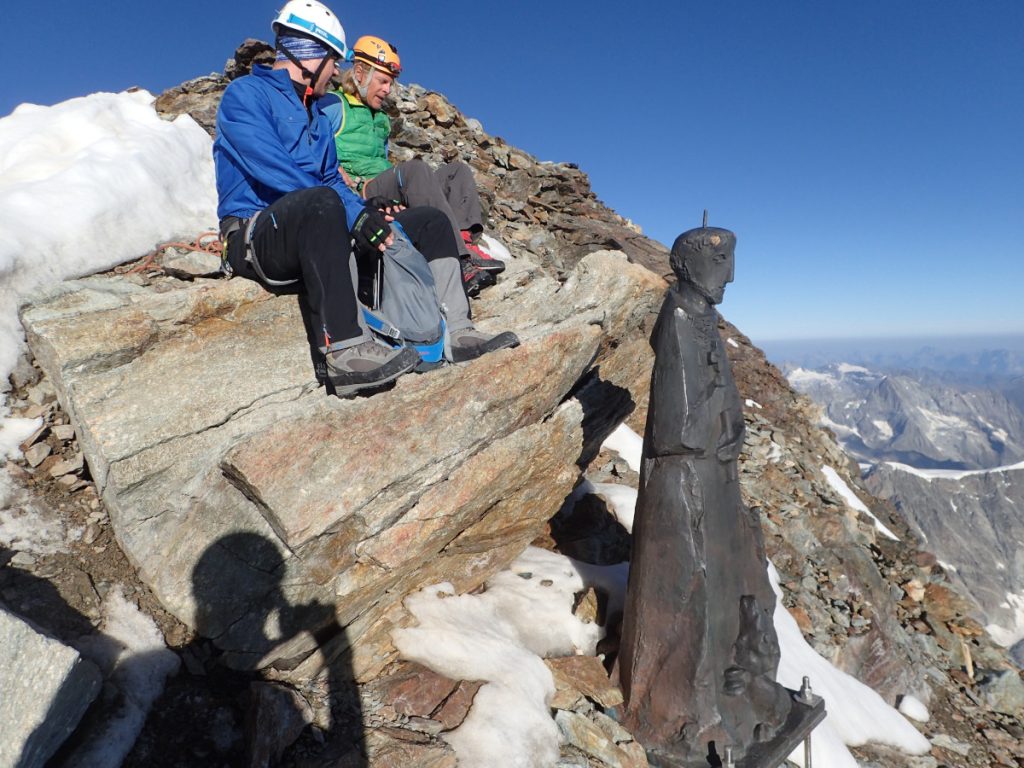
I am overwhelmed by my emotions. I have seen this mountain so many times from all sides. And now from up here, I can see more than 30 four-thousand-meter peaks, Zermatt and the world, that is lying at my feet.
The day before climbing Matterhorn
The Hörnli hut lies at the foot of the Matterhorn at a hight of 3260 meters and is probably the most famous mountain hut in the Alps. From here Alpinist from all over the world climb the mountain, which locals call the “Horu“.
By the way: In 2015, Zermatt celebrated the 150th anniversary of the first ascent of this famous icon.
4 pm The daily visitors have made their way down to the valley to Zermatt. Just the mountaineers are staying and arrive gradually in the hut. The atmosphere changes – the chit-chat becomes a professional discussion. A good many is sitting on the porch and watching the peak of this powerful massif – silently or while discussing in a group.
6.30 pm Alpine guide meeting: they speak about the weather conditions, the safest route and current circumstances on the mountain.
7 pm Joint dinner. The guides get to know their guests, there is frolicking. Everyone is trying to drink as much as possible, which is not just important in this hight but also for the forthcoming efforts. My guide ist Samuel Anthamatten, one of the most popular and ambitious “young guns“. He recently came back from his successful Cerro Torre expedition.
8 pm Packing the backpack: everything that is not absolutely necessary stays in the hut. The lightweight alpine pack from Tatonka proves to be pleasing. A minimum of weight is the primary focus. The climb up takes after all approximately five hours, the way down firmly three hours.
9.30 pm Bedtime. The alpinists try to get some sleep or organize their thoughts.
3.30 am Day guard. Provided with the complete equipment everybody braces oneself silently at breakfast. Shortly after: the two-part rope parties are standing at the entrance, waiting nervously and tensely.
3.50 pm The hut keeper opens the door and everyone decamps, roped up in the perviously stipulated order. We go first, since Samuel is the most experienced mountain guide.
After just a few hundred meters the climbing already starts in complete darkness on a vertical wall with good hold on the rock. We have to hurry. We continue on a narrow and steep path, which alternates with climbing sections. The trail becomes steeper – it is still dark – our headlights show us the holds and footsteps. I already feel the exposure we are subjected to. No time for slips. Samuel and I climb almost everything with a short rope, since we are both mountain-experienced.

That means saving time. Taking pictures and climbing without “stop and go“- a difficult task.
Time and again rope parties take the wrong way and Samuel has to whistle them back. Now I understand the fact that pathfinding is very difficult on the Matterhorn. Almost daily the “Air Zermatt“has to rescue alpinist from the mountain with great effort.
Rockfall – narrowly escaping a rockslide
Suddenly there is loud din and enormous rumble. It is difficult to tell where it comes from – we plunge underneath a overhang. The first stones are hissing like bullets over our heads. A huge rockslide just left to us. My knees are shaking. That was a close call. A clear sign that we chose the right route.
Two hours later we catch sight of the built-in-rock bivouac at a hight of 4000 meters. Now it is time to find climbing sections on the steep and exposited mountain rock. To my surprise we clim past the Solvay-bivouac. Samuel chooses a climbing-variant which is unknown to the other alpinist and we outpace two rope parties that passed us shortly before.
The sunrise’s intense play of colors begins. An indescribable moment. We find ourselves just slightly below the so-called shoulder. I am happy to finally have some sips of hot tea and a bar. We deposit the crampons in the rock since we are sure that we will not need them. There is no proper ice or snow on the mountain.
Going further and further, up to the peak
After a much too short break we continue climbing the wall – later directly on the exposed ridge -always on the short rope. We easily master the fixed rope and the overhanging section and then there is the peak.
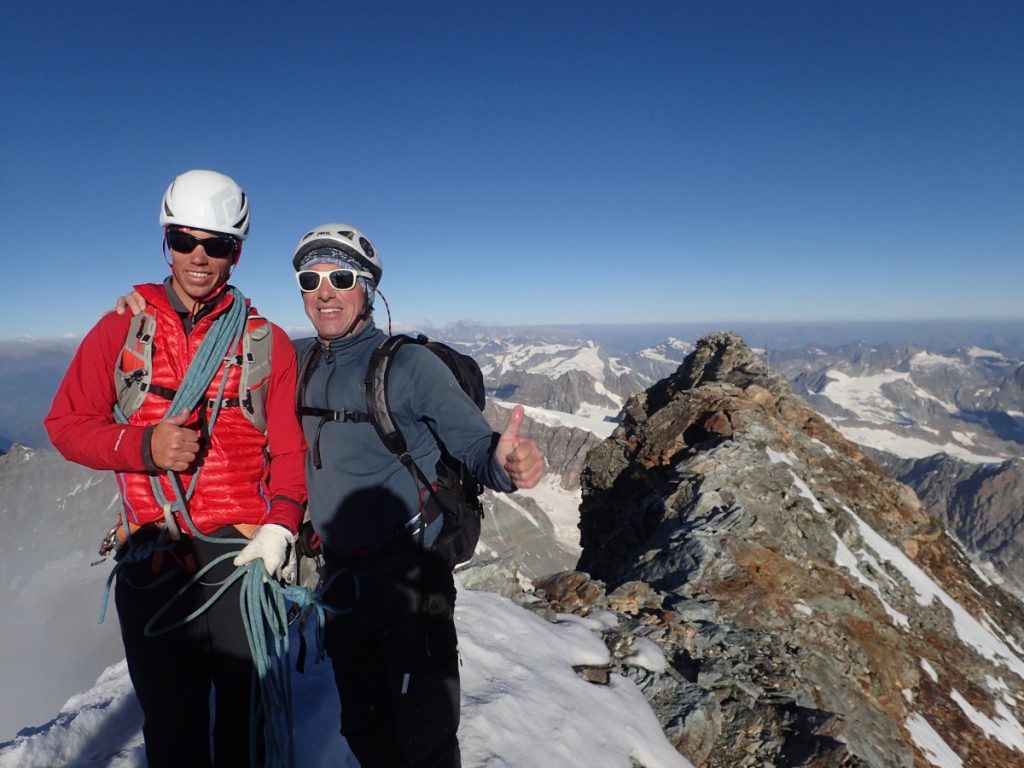
A narrow ridge leads to the lower Italian crest, where the summit-cross is placed. The highly focused descent and the climb down sap my energy. For some recovery we rappel occasionally.
Finally we arrive at the Hörnli hut. I am feeling overwhelmed and jaded. The summit-beer is gulped down quickly. The climb down to Zermatt is still pending.
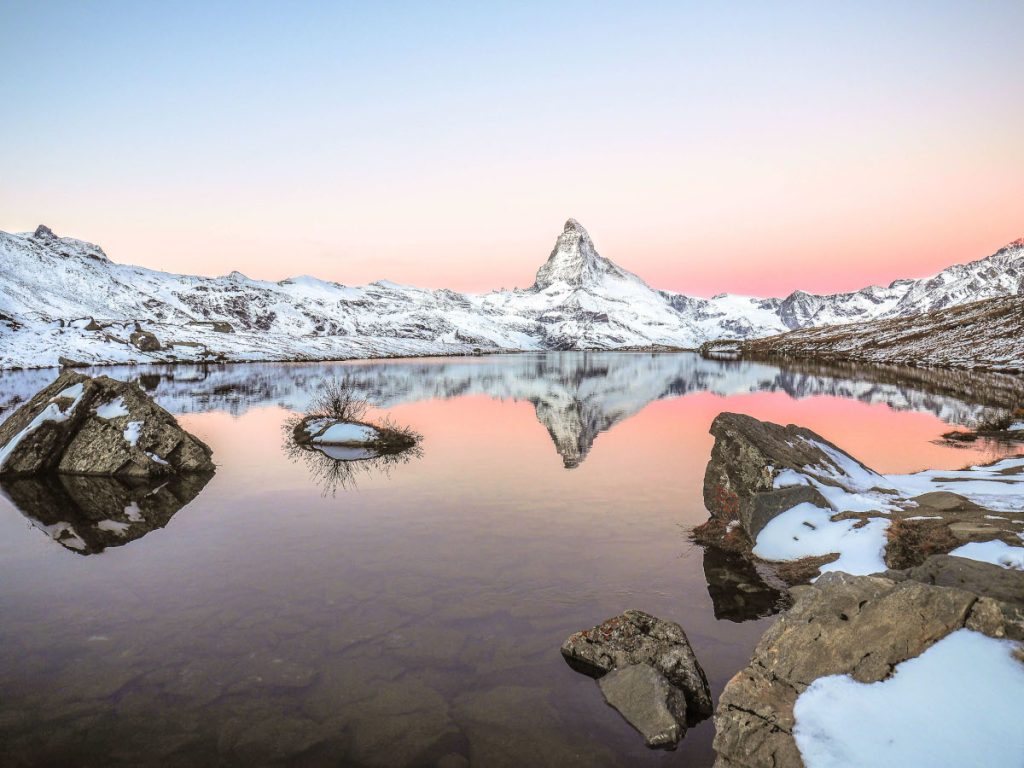
Photos, Text @ Michi Bösinger
It is recommended to commit the tour with a local mountain guide.
http://www.alpincenter-zermatt.ch/welcome.html
Equipment list for the ascent of the Matterhorn
- lightweight alpine backpacks
- vacuum bottle for hot beverages for example Tatonka’s Hot&Cold Stuff
- light and sturdy outdoor-pants
- light soft-shell jacket
- all-weather jacket (hardshell)
- cap and gloves
- technical equipment (mountaineering harness, carabiner, headlamp, climbing rope)
- first aid set for example Tatonka’s First Aid Basic
- some snacks for on the go (but not much) for example cereal bars or nuts
- alpine club membership ID (SAC or DAV )
- Attention: Prior telephonic reservation in the hut is obligatory
- Professional tip: a little bottle of cola can be a great energy booster




